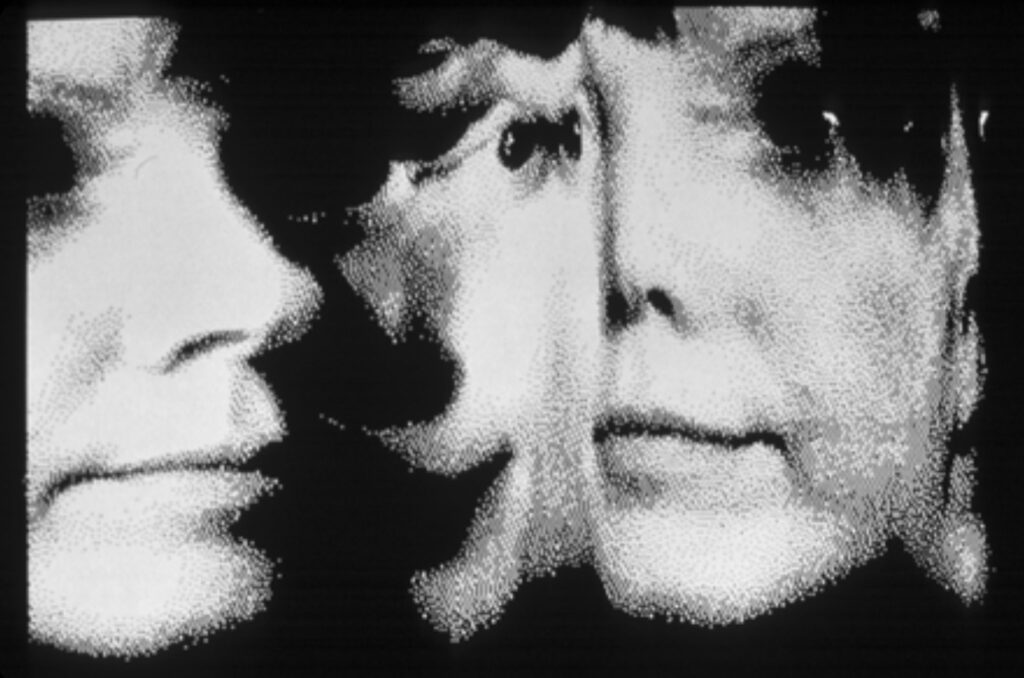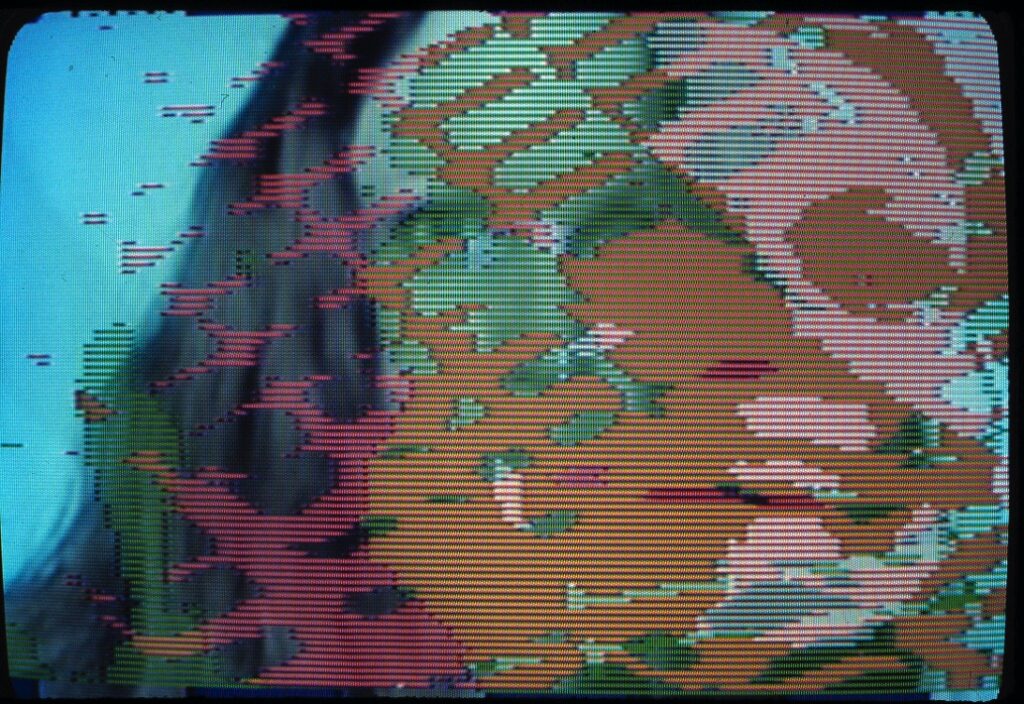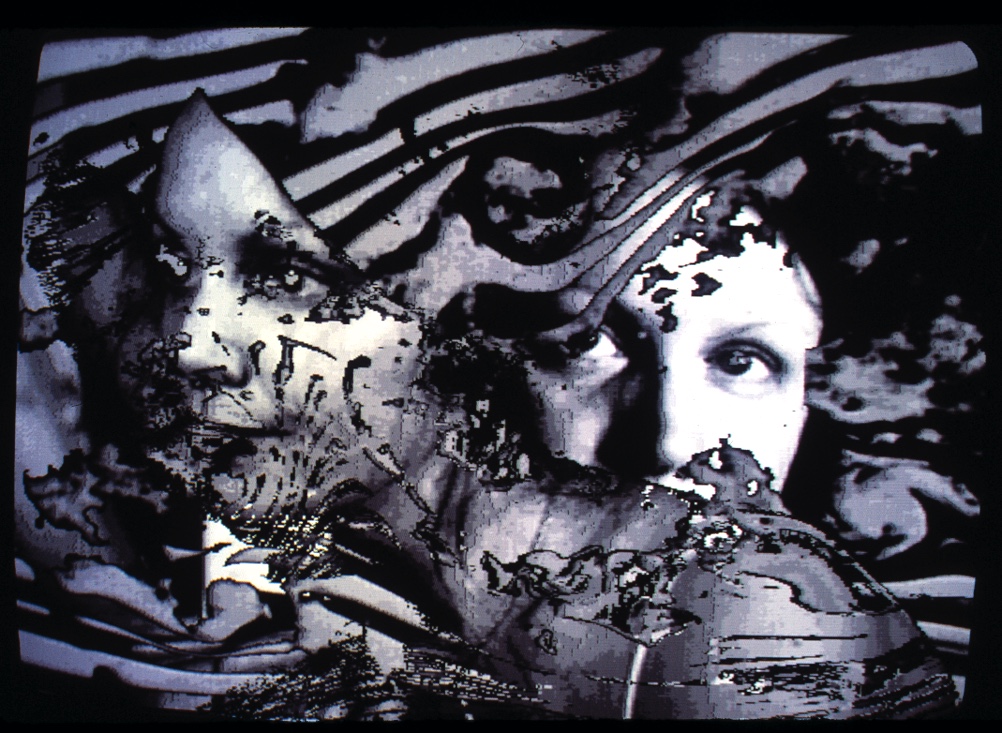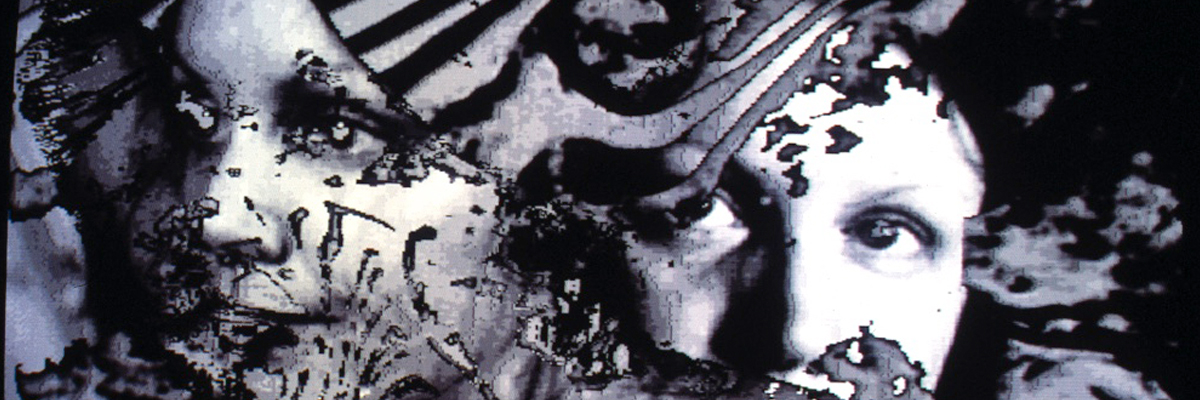The term “early computer art” usually evokes abstract plotter drawings based on algorithms by scientists and mathematicians like Herbert W. Franke or Frieder Nake as well as the artists Manfred Mohr and Vera Molnár. Although computer-generated figurative imagery has been created in the 1960s and 1970s, the image editing tools emerging during the 1980s finally allowed significantly new possibilities for artists. Joan Truckenbrod was one of the first to devote her artistic practice to the subject of self-portraiture in computer art. To create her multilayered collaged works, she combined the full repertoire of the technological possibilities of her time to link the human and the machine.

For the multiple self-portrait Ripped Distance (1982) (Fig. 1) Joan Truckenbrod scanned herself with a video digitizer. This is a stripe-like device that scans objects line by line over a certain amount of time, in opposite to a photo camera, which takes an image of the whole object in a second. Joan Truckenbrod transformed her facial image by moving in front of the video digitizer. She moved with the scan line to stretch her image or against to compress it. She further changed the lighting during the scan. The output appears in sculptural, dynamic and fluid waveforms, which for Truckenbrod symbolize the process of personal change and transformation. The artist understands the video digitizer as a sculpting tool for time and light and the self-image a as a tool to inject humanness into the digital. Truckenbrod aims to create a fusion of woman and machine and to address the (inner) conflicts females had due to social constraints.

In Rites of Passage (1984) (Fig. 2) Joan Truckenbrod’s self-images undergo a digitization process that merges different layers of reality. Her portrait in the background faces the viewer. In this green-turquoise image, which is a live video on the computer screen, the artist appears very natural. The stream is superimposed by a grid-like structure that merges into a portrait and that appears much more synthetic, digital and abstracted. The violet and orange colors complementary contrast the colors of the live stream image. To obtain the final image, Truckenbrod photographed her screen in real-time with a photo camera. Rites of Passage is inspired by indigenous cultures of the African and Australian continent. They perform ceremonies to open portals to other spheres of experience like the ancestral realm or the spiritual realm. These are woven together, almost like multiple simultaneous realities. Similarly, Truckenbrod sees our use of the computer as a ritual-like way to access other realms. To create this transition, she incorporates digital tools like the video digitizer, computers, software or cameras.

In Lattice Vibrations (1986) (Fig.3) Truckenbrod again superimposes digital compositions over live video images. Fragmented waves and a strong light-dark contrast evoke a more dichotomous and conflicting atmosphere than the colorful Rites of Passage. Instead of two faces merging into one another, they fall apart in Lattice Vibrations. The eyes of Truckenbrod’s self-portrait in the background follow the artist’s appearance in the foreground. But this one is turned away from her and from the viewer in profile view. She seems to move towards the left side and out of the image. The face is cut abruptly across the forehead and appears mask-like, while the lattice structure seems to come out of it like flying hair. She is covered in water splashes that visualize time passing, change and transformation for the artist.
In all three works notions of entanglement between faces and masks are visible. Masks usually fulfill a function in rituals of indigenous cultures as powerful tools that embody a connection to the spiritual world or to another part of the own identity. This is how Truckenbrod understands the different versions of herself that exist simultaneously in her images. Therefore, her works refer the tradition of simultaneous self-portraits in art history (e.g. Jeff Wall, Hannah Höch, Marcel Duchamp, Antonie Van Steenwinckel, Johannes Gumpp) and they connect digital art to the long history of self-portraiture. Truckenbrod develops the genre further to reflect the digital conditions and to tie them back to the realness of being human. At that time, in the mid-1980s, she was one of a very few working extensively on this subject in computer art for almost ten years. From today’s point of view, she is a pioneer and a forerunner of the following generations of artists who deal with the self in the mirror of digital possibilities.
TINA SAUERLÄNDER is a curator, writer and speaker in the realm of digital art. She currently pursues a PhD on Artistic Self-Representation in Digital Art in the department of Interface Cultures, Art University, Linz, Austria.
[su_animate type=“fadeInLeft“ duration=“3″ delay=“0″ inline=“no“ class=““]#femaleheritage | The post on Joan Truckenbrod as a pioneer of computer art is a contribution to the blogparade „Frauen und Erinnerungskultur #femaleheritage“, where you can already find many exciting posts! | Organized by Monacensia at Hildebrandhaus in cooperation with Dr. Tanja Praske of KULTUR-MUSEUM-TALK.[/su_animate]





Ein Gedanke zu „Tina Sauerlaender on a pioneer of self-portraiture in computer art – Joan Truckenbrod“
Die Kommentare sind geschlossen.